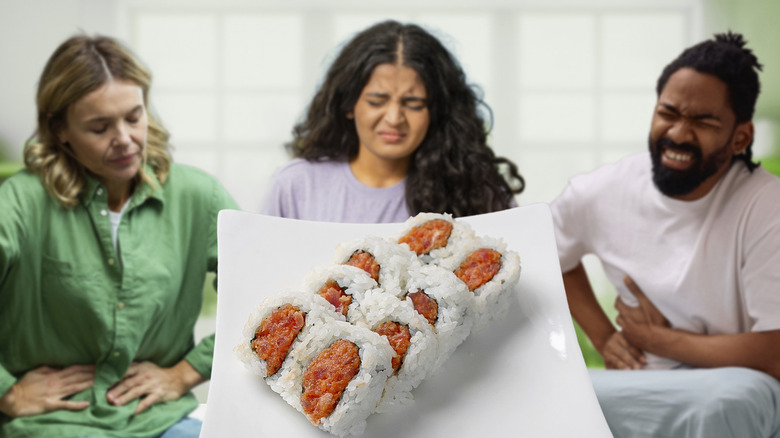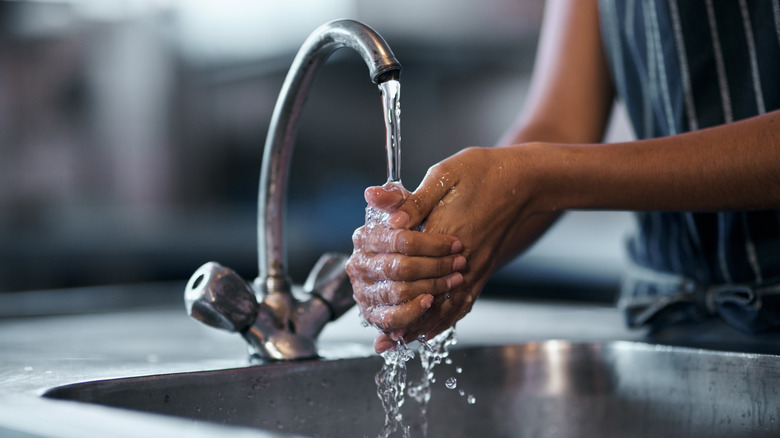The Major Tuna Recall That Sickened Over 400 Diners Across 28 States
Restaurant fish somehow always tastes better than homemade, but if any of it has ever made you ill, you may have wondered how to make your next tuna salad fish-free. In 2012, Moon Marine USA Corporation of Cupertino, California, voluntarily recalled almost 60,000 pounds of Nakaochi Scrape, a frozen raw yellowfin tuna. The recall came after over 400 reports of people who became ill shortly after having eaten the fish. The fish was contaminated with strains of Salmonella. Of those who became sick, 410 were infected with Salmonella Bareilly in 28 states and the District of Columbia. The second strain was Salmonella Nchanga, which had 15 reported cases across seven states.
Those who fell ill were aged between under one year old and 86 years old. Thankfully, no deaths were reported throughout the ordeal. A detailed investigation was launched to determine the source of the outbreak and concluded that among those who became sick, the common denominator was that they had all eaten sushi, ceviche, or sashimi made with the tuna product. Nakaochi Scrape is back meat that's scraped off the bones of the tuna, and is used in restaurants for ceviche, sashimi, and sushi — particularly spicy tuna varieties. The Centers for Disease Control advised consumers not to eat the tuna and advised retailers not to serve the tuna from Moon Marine USA Corporation. Salmonella can affect anyone, but it's especially dangerous for young children or infants, elderly individuals, and those with weakened immune systems. Symptoms can range from chills and vomiting to infections of the tissue surrounding the brain and the lining of the heart if it enters the bloodstream.
How does a tuna contamination happen?
In May 2012, four months after the first reported illness, Moon Fishery India Private Limited extended the recall to include its 22-pound boxes of Tuna Strips, Product of India, because they were at risk of being contaminated with Salmonella after the Food and Drug Administration had found Salmonella Bareilly in a product sample. While the tuna recall was a large incident and many people fell ill, it's far from one of the deadliest food recalls that have swept the U.S., and it doesn't mean you can't go out and enjoy a large plate of sushi from your favorite restaurant, as long as those who work there are handling food properly.
Tuna (and every other food) can become contaminated with Salmonella at any point in the production process. If those handling the fish practice poor hygiene (like not washing their hands properly) or the facility or restaurant preparing the fish is unclean and unsanitary, the risk of Salmonella rises. If you love seafood and want to be more cautious of potential illness, make sure to frequent restaurants that practice cleanliness, and know where the fish they serve comes from. Of course, this won't bring your chances of contracting a food-borne illness down to zero, but it will certainly mitigate potential risks.

